Deep in the valley, a stunning vista of Wolastoqey art
Tucked away in the hills south of Perth-Andover, in the countryside and among the evergreens, a surprise smattering of colourful cabins looks surreal and almost out of place.
Four years ago, the cabins were remnants of an abandoned Bible camp. Then the Wolastoq Learning Initiative asked artist Emma Hassencahl-Perley to give them new life.
For three summers, Hassencahl-Perley painted the cabins in vibrant colours then painted an animal on each one.
And the transformation is not just decorative, she said.
Hassencahl-Perley will translate the name of the colour and animal on each cabin into Maliseet, or Wolastoqey, so camp-goers — young people from First Nations in the area — can maintain some of their language.
Seven teachings
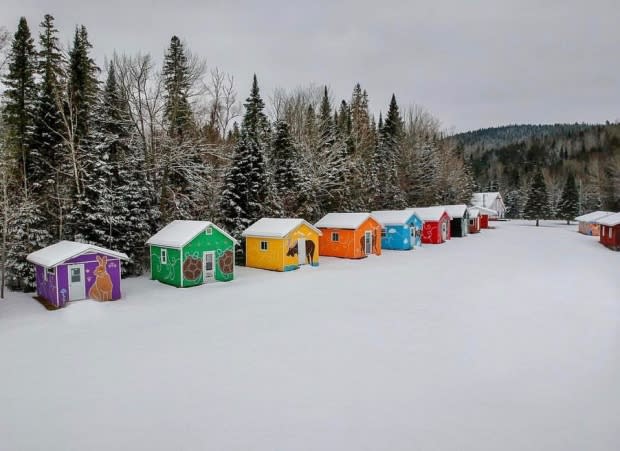
"They will serve as language tools because I saw everything being translated into our language — the animals, the colours and even the seven sacred teachings," she said.
Hassencahl-Perley, who was born in Tobique First Nation, said that for the past few years she's been researching and learning more about her culture, including the sacred teachings that are a big part of Indigenous values.
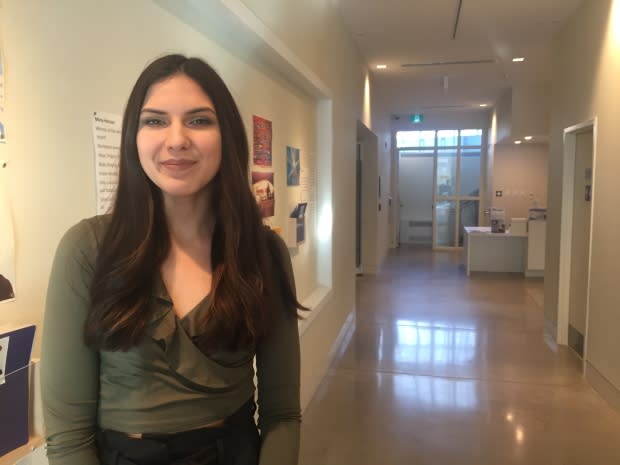
The teachings are wisdom, truth, humility, bravery, honesty, love and respect and each is represented by an animal. At first she thought the teachings originated with the Anishinabe people in Ontario, but she learned they're universal to everyone.
"I think it's just been reinforcing how beautiful our culture is and it's helped me get in touch with who I am and where I come from," she said.
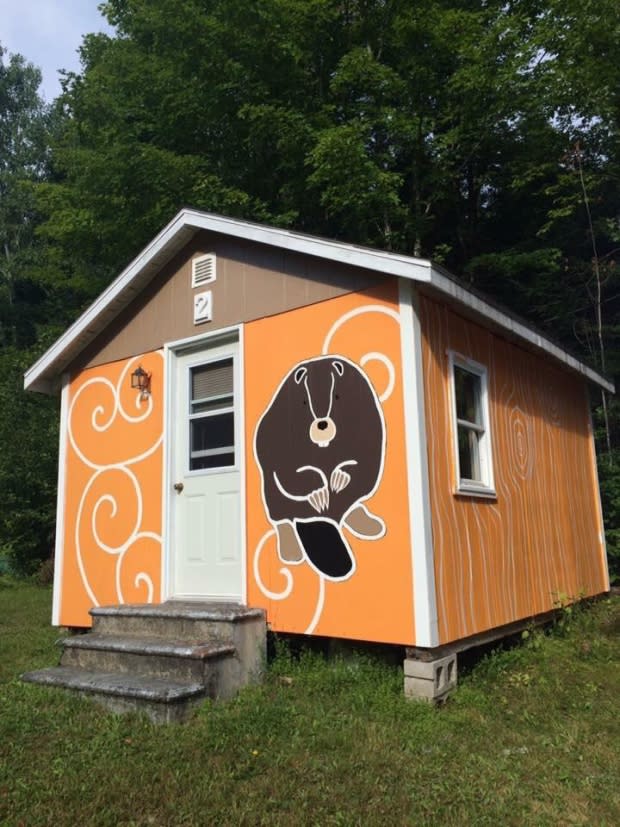
'Lucky' to have the artist
The Wolastoq Education Initiative runs the camp, about 15 kilometres south of Perth-Andover, and provides science lessons to Indigenous youth.
Sky Perley, the executive director, said the site is close to Tobique First Nation and allows kids to get out of their comfort zone without leaving their heritage behind.
The camp is set on eight acres (about three hectares) of land, with a stream running through it.
"There's a ton of wildlife there," he said. "So you really get to the summer camp experience. It's tucked in right into a valley, and it's a beautiful spot to be able to retreat to."
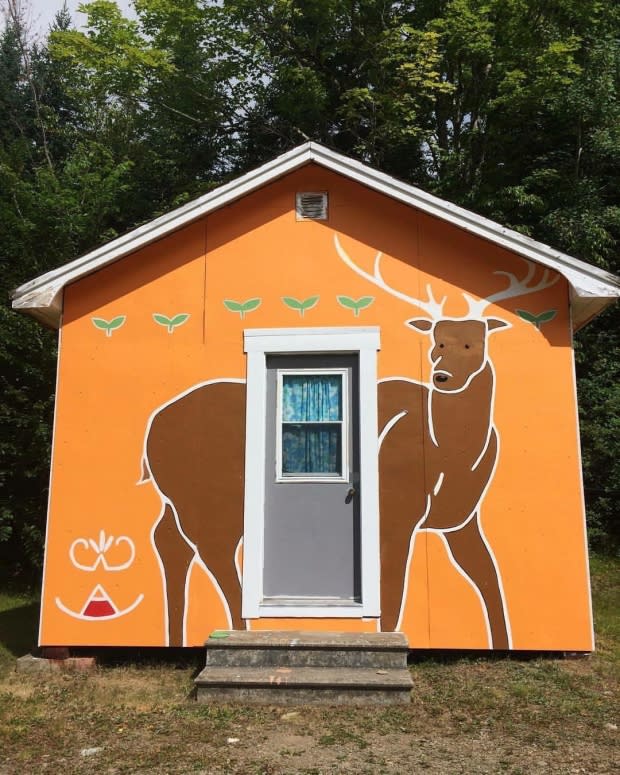
"So we're lucky and fortunate to have the space and and to have somebody like Emma. … We were lucky when we grabbed it when we did because now she's getting big and famous.
"And this is kind of one of her first projects while she was in school/out of school and she really put her heart and soul into the artwork out there."
3 summers and counting
Hassencahl-Perley is now a curator at the Beaverbrook Art Gallery.
She started the camp project in 2015, thinking it would be done quickly. But the 15 cabins needed some repairs, and painting the animals to scale posed a few challenges.
"I would have to go in with chalk and then take a couple steps back or 20 steps back and then go back in and just try to pare down my shapes and my size," she said. "I think, yeah, it wasn't really the inspiration that brought me difficulty. … It was the process, but then I love the process."
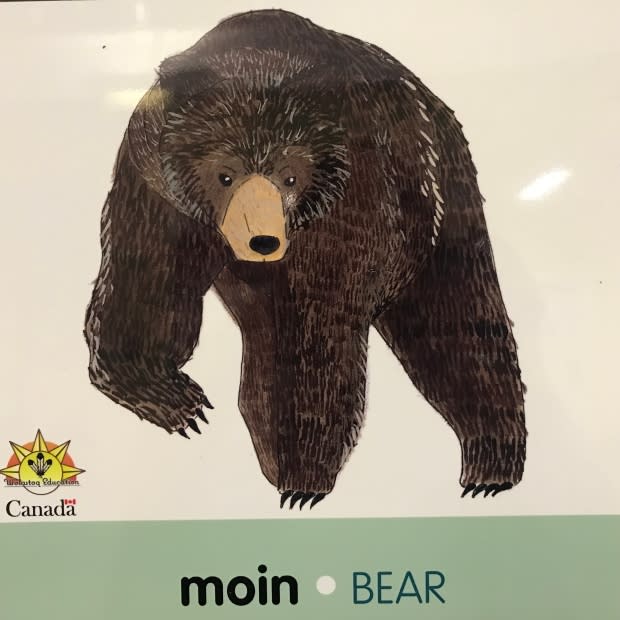
She said she has one or two more cabins to paint, and the camp counsellor building.
Painting the cabins every summer has been rewarding.
"I really loved going out there," she said. "That was the best summer job I could have hoped for."

